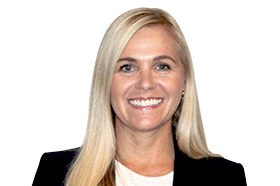The SEC issued a Final Rule (PDF - 809KB), Qualifications of Accountants, to amend certain auditor independence requirements in Rule 2-01 of Regulation S-X.
The amendments modernize auditor independence rules and more effectively focus the independence analysis on relationships and services that are more likely to impair an auditor’s objectivity and impartiality based on risk.
Below is a summary of the significant amendments.
Definition of ‘affiliate of the audit client’
The Final Rule amends the definition of “affiliate of the audit client” in Rule 2-01(f)(4) as follows:
- Clarifies that the definition should be used to identify affiliates of audit clients that are operating companies, including portfolio companies within the private equity structure or investment company complex.
- Incorporates a dual materiality threshold where a sister entity of an audit client will be included as an affiliate if both the sister entity and the audit client are individually material to the controlling entity; formerly, all “controlled” sister entities were considered affiliates.
- Affirms that services and relationships with sister entities that are not affiliates because of materiality will remain subject to the independence principles set forth in Rule 2-01(b),1 and that updated materiality assessments of such entities will be required.
Definition of ‘investment company complex’
The Final Rule also amends the definition of “investment company complex” (ICC) in Rule 2-01(f)(14), including the following amendments:
- Requires use of the term “entity under audit” as the starting point for an analysis of entities included in the ICC.
- Clarifies that the definition of an ICC includes unregistered funds.
- Contains a significant influence provision that includes in the definition any entity over which an audit client that is an investment company or investment adviser/sponsor has significant influence, unless the entity is not material to the audit client, or any entity that has significant influence over an audit client that is an investment company or investment adviser/sponsor, unless the audit client is not material to the entity that has significant influence over it.
- Includes in the definition any sister investment advisers or sponsors where a dual material relationship exists.
- Includes in the definition a sister investment company that shares the same adviser or sponsor as an investment company under audit, regardless of whether such entity is material to the shared investment adviser or sponsor.
- Applies a dual materiality threshold for portfolio companies of sister investment companies that are controlled by the same investment adviser or sponsor, unless the portfolio companies are engaged in the business of providing administrative, custodial, underwriting, or transfer agent services.
The SEC has NOT amended its independence rules on how to evaluate if a non-audit services or business relationship is permitted or prohibited.
Definition of ‘audit and professional engagement period’
The Final Rule amends the definition of “audit and professional engagement period” in Rule 2-01(f)(5)(iii) as discussed below:
- Shortens the look-back period to one-year for domestic first-time filers in assessing compliance with SEC independence rules for the most recent fiscal year included in the SEC filing, provided that the auditor complied with applicable independence standards (for example, AICPA independence standards) in all prior periods covered by the filing.
- Applies revised definition to both existing and new audit relationships, including a reverse merger (similar to an IPO through a special purpose acquisition company (SPAC)).
- Stipulates that the re-filing of a new registration statement would be considered a first-time filing for issuers that withdraw their initial registration statement.
Exclusions for certain student loans and de minimis consumer loans
The Final Rule further adds certain student loans and de minimis consumer loans to the categorical exclusions from independence-impairing lending relationships under Rule 2-01(c)(1)(ii)(A)(1) and (E), provided that the borrower did not obtain it while a covered person in the firm, as follows:
- Provides an exception for certain student loans for a covered person or their immediate family members.
- Replaces references to “a mortgage loan” with “mortgage loans” to include different types of loans, such as second mortgages, home improvement loans, equity lines of credit, and similar mortgage obligations collateralized by a primary residence obtained under normal lending procedures, terms, and requirements.
- Replaces references to “credit cards” with “consumer loans” to broaden the provision to include other forms of consumer financing, such as retail installment loans, cell phone installment plans, and home improvement loans that are not secured by a mortgage on a primary residence.
Introduces a transition framework
The Final Rule amends the transition provision in Rule 2-01(e) by introducing a transition framework to address inadvertent independence violations resulting from mergers and acquisitions. The major provisions include:
- Provides that the auditor’s independence will not be impaired because an audit client engages in a transaction, such as a merger or acquisition, that gives rise to a relationship or service that would impair independence, provided that all of the following conditions apply:
- The auditor is in compliance with the applicable independence standards related to such services or relationships when the services began and throughout the period in which these standards apply.
- The auditor has or will address such services or relationships promptly, in most cases, before the effective date of the merger/acquisition (the Final Rule notes that any necessary actions should generally occur no later than six months after the effective date).
- The auditor has a quality control system, including procedures and controls that
- Monitor the audit client’s merger and acquisition activity to provide timely notice of a merger or acquisition; and
- Allow for prompt identification of such services or relationships after initial notification of a potential merger or acquisition that may trigger independence violations, but before the effective date of the transaction.
The transition framework is intended to allow an auditor and its audit client sufficient opportunity to transition out of services and relationships in an orderly manner without impairing the auditor’s independence. If an independence violation is identified subsequent to the effective date of the transaction, the firm and the audit client’s audit committee would need to evaluate all relevant facts and circumstances to determine if the auditor has the necessary objectivity and impartiality to perform the audit of the combined entity.
Replace reference to ‘substantial stockholders’ in Business Relationships Rule
The Final Rule amends Rule 2-01(c)(3) by replacing the reference to “substantial stockholders” in the Business Relationships Rule with the concept of “beneficial owners with significant influence,” as follows:
- Provides consistency between the Loan Provision and the Business Relationships Rules by replacing the term “substantial stockholder” with the phrase “beneficial owners (known through reasonable inquiry) of the audit client’s equity securities where such beneficial owner has significant influence over the entity under audit,” clarifying which persons are in a decision-making capacity.
- Clarifies application of the Business Relationships Rule to officers and directors, by amending the Rule to refer to “an audit client’s officers or directors that have the ability to affect decision-making at the entity under audit.”
The Final Rule also contains other miscellaneous updates, but these do not affect the independence requirements. Refer to the Final Rule for more details.
Effective date
The Final Rule is effective 180 days after it is published in the Federal Register, with voluntary compliance permitted after such publication in advance of the effective date, provided that the final amendments are applied in their entirety from the date of early compliance.
Auditors are not permitted to retroactively apply the final amendments to relationships and services in existence prior to the effective date or the early compliance date if selected by an audit firm.
The SEC notes that the PCAOB has disclosed publicly that it plans to conform its independence rules in response to these amendments.
1 Rule 2-01-(b) states that “The Commission will not recognize an accountant as independent, with respect to an audit client, if the accountant is not, or a reasonable investor with knowledge of all relevant facts and circumstances would conclude that the accountant is not, capable of exercising independent and impartial judgment on all issues encompassed within the accountant’s engagement. In determining whether an accountant is independent, the Commission will consider all relevant circumstances, including all relationships between the accountant and audit client, and not just those relating to reports filed with the Commission.”
Contacts:



This Grant Thornton LLP content provides information and comments on current issues and developments. It is not a comprehensive analysis of the subject matter covered. It is not, and should not be construed as, accounting, legal, tax, or professional advice provided by Grant Thornton LLP. All relevant facts and circumstances, including the pertinent authoritative literature, need to be considered to arrive at conclusions that comply with matters addressed in this content.
For additional information on topics covered in this content, contact a Grant Thornton LLP professional.
Trending topics
Share with your network
Share